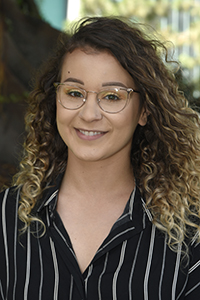Abstract:
Biomineralization is the intricate biochemical process through which living organisms create hierarchically structured organic-inorganic composites that offer crucial biological functionalities like catalysis, storage, and protection. Natural biomineralization processes have inspired the biomimetic crystallization of protein-based metal-organic framework biocomposites (p@MOFs) to form biohybrid materials for potential applications in biomedicine and biocatalysis. Under this approach, protein microenvironments can be tuned to enhance their activity, stability, and recyclability under nonphysiological conditions by simply mixing proteins, metal salts, and organic ligands under aqueous, ambient conditions. A critical knowledge gap in our understanding of p@MOF structure-function relationships is how the precise spatial localization and distribution patterns of the proteins embedded within the MOF crystals affect their overall properties. Furthermore, the spatiotemporal tracking of protein molecules during the biomimetic crystallization process has yet to be fully elucidated, which is essential for designing synthetic procedures to target specific structures and functions.
My dissertation work utilizes high-resolution microscopy methods to visualize the biomimetic crystallization mechanisms that dictate protein localization and spatial distribution pattern outcomes. To do this, we first developed a methodology that leverages the naturally occurring iron oxide mineral core of the protein horse spleen ferritin (Fn) as a contrast agent to directly observe individual proteins during the crystallization pathways and outcomes of p@MOFs using a distributed transmission electron microscopy (TEM) platform. We next exploited different electron microscopy modalities such as liquid phase TEM (LP-TEM), cryogenic TEM (cryo-TEM), and cryo-electron tomography (cryo-ET) to understand how proteins influence nonclassical crystallization pathways. Our work demonstrates that adjusting the MOF precursor ratios and protein concentrations alters how proteins are arranged, localized, and aggregated within MOF crystals. Furthermore, this localization is intimately tied to the underlying crystal formation mechanism. This work gives important insights into the influence proteins have on the crystallization pathways of MOFs, serving as a potential roadmap for designing highly controlled advanced materials capable of improving protein immobilization, performance, and delivery.
Speaker:
Location:

